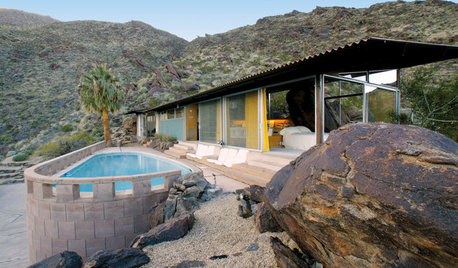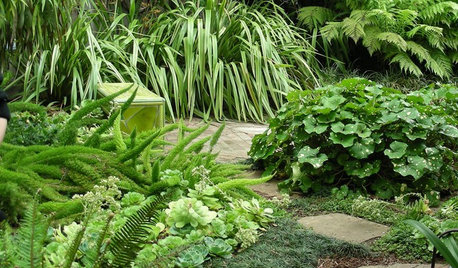Oklahoma Drought Monitor 8/7/2012
Okiedawn OK Zone 7
11 years ago
Related Stories

EVENTSDesign Calendar: Jan. 27-Feb. 17, 2012
Modernism Week, Ben Bernanke at the Builders' Show, a celebration of plywood, and more
Full Story
GARDENING AND LANDSCAPINGReaders' Choice: The 10 Most Popular Outdoor Spaces of 2012
All in the courtyard, please rise — these favorite patios, yards and decks deserve your full attention
Full Story
HOUSEPLANTS8 Essentials for Healthy Indoor Plants
Houseplants add so much to our homes — and can thrive when grown in the right conditions. Keep these tips in mind
Full Story
PLANTING IDEAS8 Sumptuous Shade Garden Plant Combinations
Enjoy these plant combinations made for spots with varying levels of shade and different garden zones
Full Story
TREES7 Deer-Resistant Flowering Trees to Plant this Fall
If you live in a neighborhood with roaming deer, consider these beautiful trees that won't tempt hungry guests
Full Story
HOME TECHTurn Your Smart Phone Into a Home Security System
Monitor your home a less expensive way by putting your phone and some new gadgets to work
Full Story
SAVING WATERXeriscape Gardens: How to Get a Beautiful Landscape With Less Water
Conserve water and make gardening much easier with the xeriscape approach’s 7 principles
Full Story
SAVING WATERHouzz Call: Are You Letting Go of Your Lawn?
Many facing a drought are swapping turf for less thirsty plantings. If you’re one of them, we’d like to hear about it
Full Story
SAVING WATER11 Ways to Save Water at Home
Whether you live in a drought-stricken area or just want to help preserve a precious resource, here are things you can do to use less water
Full Story
GREEN BUILDINGHow to Harvest Rainwater for Your Garden
Conserve a vital resource and save money by collecting stormwater for irrigation in a barrel or tank
Full Story






Okiedawn OK Zone 7Original Author
chickencoupe
Related Professionals
Leawood Landscape Architects & Landscape Designers · Roxbury Crossing Landscape Architects & Landscape Designers · Stamford Landscape Contractors · Franklin Landscape Contractors · Hawthorne Landscape Contractors · Inglewood Landscape Contractors · La Verne Landscape Contractors · Ringwood Landscape Contractors · Selden Landscape Contractors · West Orange Landscape Contractors · Clute Decks, Patios & Outdoor Enclosures · Highland Springs Decks, Patios & Outdoor Enclosures · Knoxville Decks, Patios & Outdoor Enclosures · Myrtle Beach Decks, Patios & Outdoor Enclosures · Prescott Decks, Patios & Outdoor EnclosuresOkiedawn OK Zone 7Original Author
chickencoupe
Okiedawn OK Zone 7Original Author
chickencoupe
Okiedawn OK Zone 7Original Author
chickencoupe